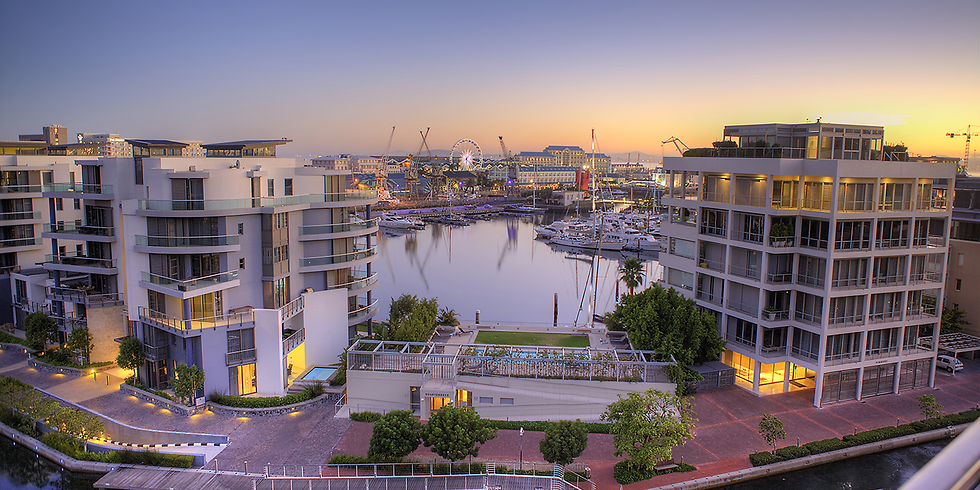A New Face of Urban Luxury
- Sahej Jain
- Jul 13
- 3 min read
Cranes dominate skylines, and expensive towers gradually emerge in African metropolises. From Accra and Lagos to Nairobi and Johannesburg, a quiet revolution is changing city skylines: the emergence of ultra-prime property. These exceptional, high-end structures — characterised by outrageous prices, exclusivity, and opulent amenities — have become significant icons of prosperity and ambition in the African metropolis's narrative. Beyond real estate transactions, however, the phenomenon is indicative of changing values, the emergence of a new affluent class, and the creation of new African identity ideals.
Ultra-prime homes are a unique category beyond mere luxury. Imagine unobstructed ocean views, custom elevators, infinity rooftop pools, easy access to concierge facilities, and specially crafted interiors by international professionals. Situated in Banana Island, Lagos; Upper Hill, Nairobi; or the Atlantic Seaboard, Cape Town, these homes are built not just for comfort but as status symbols — symbols of sophistication, success, and global connectivity. In Accra's Cantonments and Airport Residential Area, new high-rise homes now come with helipads, hanging gardens, and private cinemas, competing squarely in the global market.

The driving force of this boom is three-pronged. Firstly, Africa has a growing class of high-net-worth individuals. Nigeria, Kenya, South Africa, and Ghana have all recorded steady growth in their millionaire populations in the last decade. For them, ultra-prime apartments are not only safe assets but lifestyle statements. Secondly, rapid urbanisation is driving vertical development in thickly populated metropolitan areas. With prime land in short supply, high-rise luxury apartments provide exclusivity in addition to proximity to business centers—a vital value proposition.
The African diaspora is another strong driver. Numerous Africans abroad are coming back or reinvesting in their home countries, calling for properties that are as good and sophisticated as they have encountered elsewhere in the world. The wave of return is transforming the luxury market, elevating standards, and underpinning demand. In Africa's young, successful professionals, there is increasingly a desire for streamlined, technology-enabled living rather than large family estates, particularly those in banking, technology, or the creative sectors. These emerging buyers prioritise comfort, convenience, and modern aesthetic appeal.
Cities like Nairobi are bearing witness to this change in a big way. Neighbourhoods like Kileleshwa and Riverside are now dominated by upscale high-rise structures meant for an expanding middle and upper socioeconomic class. In South Africa, Cape Town continues to set the standard for architectural style and innovative ingenuity, while Johannesburg's Sandton remains the economic and residential hub for the wealthy. In Lagos, Banana Island maintains its position as a fortress of wealth and seclusion, being home to billionaires, chief executive officers, and foreign investors, with some residential facilities going for millions of dollars.
Who is purchasing into this boom? It's a mixed bag — local elites, returnees from the diaspora, corporations renting for their executives, and even speculators hoping to cash in on future growth. But with growth this rapid, questions are starting to arise. Is this growth sustainable? Can such developments peacefully coexist alongside the greater urban aspirations of African cities? In most locations, rental yields have failed to keep pace with spiralling property prices. Numerous apartments lie under-occupied, either in the hands of absentee landlords or out of reach of potential local renters.

This reality fuels fears of a speculative bubble and the widening urban inequality. The existence of high-rise towers often casts shadows on informal settlements, leading to stark contrasts between luxury and mere survival needs. As rooftop pools glimmer, neighbouring households struggle to have clean water and electricity. The visual contrasts are obvious, and the social implications cannot wait to be addressed. Urban planners and policymakers are increasingly being pushed to ensure that luxury development does not get in the way of inclusive growth.
The present momentum shows no signs of slowing. African urban spaces are youthful, dynamic, and expanding. The demand for high-end living will likely continue in the near term, driven by demographic change and rising income levels. What is needed is balance. Governments and developers must widen their lens — planning not just for the wealthy elite but for the rising urban middle class as well. More refined zoning laws, better public infrastructure, and equitable housing policies will be necessary to match aspiration with affordability.
Africa's ultra-prime flats are more than just assets. They are symbols of a continent in metamorphosis — mirrors of new wealth, global aspirations, and evolving tastes. The glass skyscrapers going up today are monuments to how Africans are reshaping luxury and urban living in the 21st century. The task is not to build upward, but to build smartly — so tomorrow's skylines mirror progress for all, not privilege for some.






